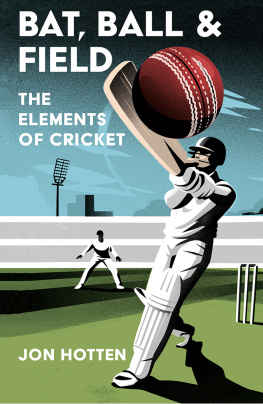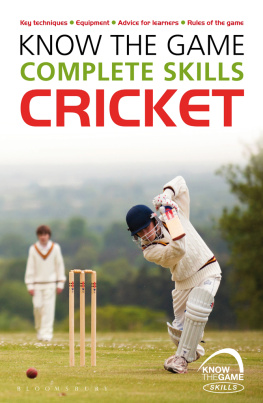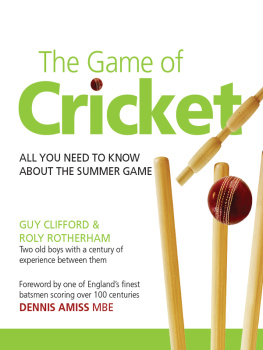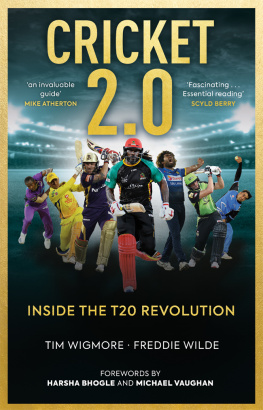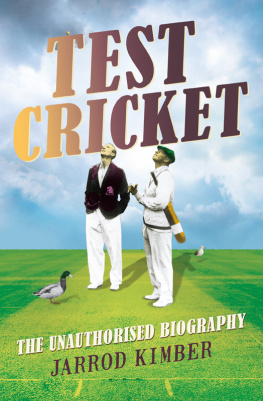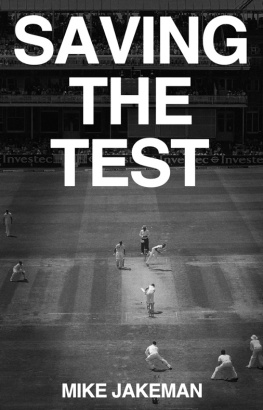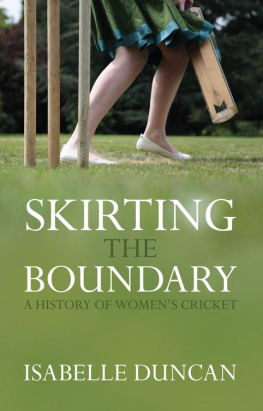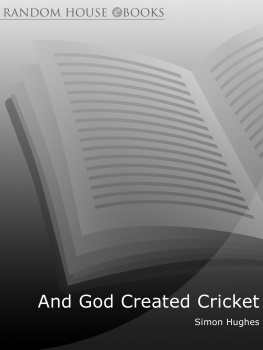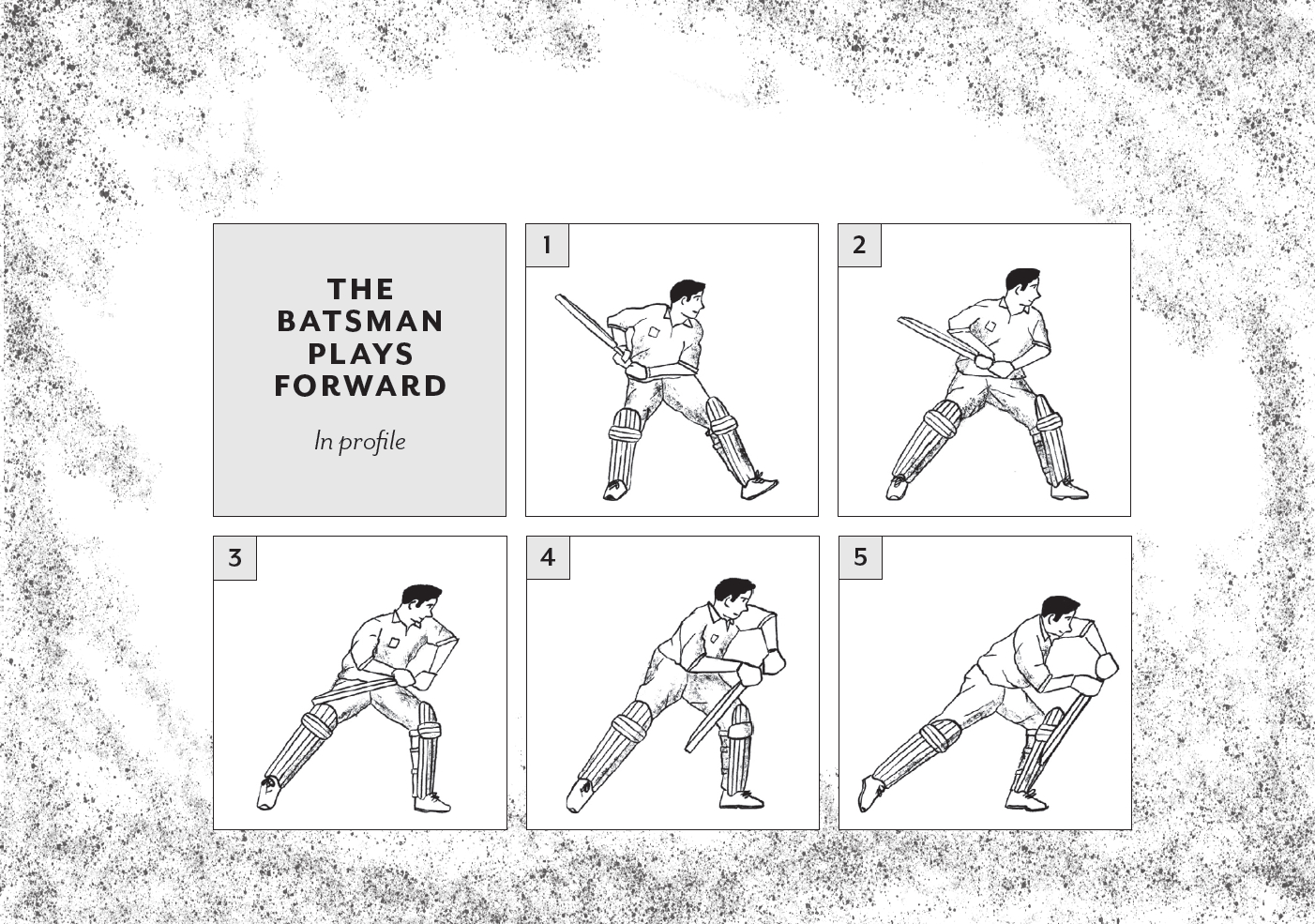Jon Hotten is the author of four books, including Muscle and The Years of the Locust, and he writes the popular cricket blog The Old Batsman. He co-wrote the award-winning documentary Death of a Gentleman, and his collaboration with the former England bowler Simon Jones, The Test, won the Wisden Almanacks Book of the Year award in 2016.
Which Laws of cricket remain unchanged since Elizabeth I sat on the throne? What is a reverse sweep? What is a googly?
Chronicling the evolution of the sport since its earliest years and highlighting transcendent moments as well as tragedies, Jon Hotten lifts the seemingly impregnable veil from the Laws, batting strokes, types of bowling and the sometimes absurd names given to where fielders stand, allowing anyone a pathway into enjoying the sport, and an introductory immersion into its long history.
This book is divided into the three parts that make up the fundamental elements of cricket: bat, ball and field. Their harmony produces crickets unique environment; their centuries-long conflict provides its innovation, adaptability and vast psychological hinterland. These sections unite to map out in a completely original way the story of the sport that began as a country pursuit and is now followed by billions across the world.
Australia
HarperCollins Publishers Australia Pty. Ltd.
Level 13, 201 Elizabeth Street
Sydney, NSW 2000, Australia
www.harpercollins.com.au
Canada
HarperCollins Canada
Bay Adelaide Centre, East Tower
22 Adelaide Street West, 41st Floor
Toronto, Ontario M5H 4E3, Canada
www.harpercollins.ca
India
HarperCollins India
A 75, Sector 57
Noida, Uttar Pradesh 201 301, India
www.harpercollins.co.in
New Zealand
HarperCollins Publishers New Zealand
Unit D1, 63 Apollo Drive
Rosedale 0632
Auckland, New Zealand
www.harpercollins.co.nz
United Kingdom
HarperCollins Publishers Ltd.
1 London Bridge Street
London SE1 9GF, UK
www.harpercollins.co.uk
United States
HarperCollins Publishers Inc.
195 Broadway
New York, NY 10007
www.harpercollins.com
The essays in Bat, Ball and Field are new, but occasional parts of them sprung from other commissions. Id like to acknowledge Wisden Cricketers Almanack for the piece about groundsmen that allowed me to meet Gary Barwell at Edgbaston soon after Virat Kohli had made the hundred mentioned ). Maybe we will find that ground one day
Also the following books: Gideon Haigh, On Warne (Simon & Schuster) and Mystery Spinner (Aurum); Martin Amis, Money (Vintage) and The Information (Vintage); Sheehan Karunatilaka, Chinaman (Vintage); Richard Tomlinson, Amazing Grace (Abacus); Vic Marks Original Spin (Allen & Unwin); Chris Gayle Six Machine (Penguin); Mike Brearley On Cricket (Constable), and the websites ESPNCricinfo and Cricket Archive. Also, Andy Bulls piece for the Guardian, Holding to Boycott: The Greatest Over Ever or Just the Most Memorable? and Russell Jacksons story for the same newspaper, Gray Nicolls Scoop, the Bat Every Kid Wanted, Turns 40.
Thanks also to Hazel Eriksson and Myles Archibald at William Collins; Tom Killingbeck; my agent Lucy Luck; Charlie Campbell; Richard Beard; Dr Tim Beard and all of my teammates at Authors CC; and Yasmin Hounsell, Lily Hotten, Ruby Hotten, Maureen Hotten, Drew, Julie Simpson, Caroline Cope, James Bowyer.
Well batted George John Camden Hotten.
The Batsman
as Hero
Mike Brearley introduces his book On Cricket with an anecdote about opening the batting with Geoffrey Boycott in Harare in 1964. Boycott played out the last delivery before tea and took off for the pavilion without waiting for his partner. Brearley caught up with him and said, cheerfully, I think, but perhaps also sarcastically, Are we going to the same place? He turned on me, snapping, None of your egghead intellectual stuff
Boycott, undeniably great but famously self-absorbed, realised perhaps that Brearleys question was open to interpretation. Boycott and Brearley were both going to the same place, the pavilion, but their destinations in cricket and in life would be quite different. Brearleys question could also be read a third way: were these two opening batsmen having the same experience while batting? Were they going to the same place, the strange hinterland where cricket exists in the mind?
The psychology of batting is vast but it has a fulcrum, a central tenet. One mistake excludes a batsman from the game, a threat that hangs over every innings, every ball, every moment of existence on the field. This single fact has made players compulsive, ritualistic, obsessive, depressed, inhibited, cautious, scared. It has built and destroyed egos, attacked the sense of self. It has forced them to formulate defences both physical and psychological. It is the tyranny of a professional batsmans daily life, when a run of low scores can destroy a career.
Brearley, who became a psychoanalyst once his playing days were done, compared being dismissed to a series of little deaths: Cricket more than any other sport helps a person work through the experience of loss by virtue of forcing its participants to come to terms with symbolic deaths on a daily basis, he wrote. And as a batsman, Brearley was intimate with failure. He was by his own admission disappointed with a Test career of thirty-nine matches in which he averaged 22.88 and didnt make a hundred. His outstanding value was as a captain, where his understanding of the game and its players turned him into crickets minence grise: a man who so bewildered Australia and Australians that one of their defeated skippers, Kim Hughes, moaned, He had nothing going for him except that he was intelligent. In particular, Brearleys role in the resurrection of Ian Botham during the mythical for England at least 1981 Ashes gave rise to his legend.

Yet in 2013, more than three decades after he played his final Test match, Brearley admitted that he still reflected on his failings. I wake up thinking about ways I got out in Test matches, in stupid ways, when I probably wouldnt have got out to the same ball bowled by the same person in a different match.
Mike Brearley was at least superficially serene. Cricket made up just one strand of who he was. Geoffrey Boycott was quite different, a man whose identity was so bound up in his success as a batsman that he once said he would give up the rest of his life for five more years of playing at his best, and who admitted that it was too painful for him to touch a cricket bat once he had retired as the old emotions would flood through him. He could be scathing, capricious, self-serving, yet he was also brave, driven and unbreakable: a player who evoked a sliding scale from frustration to loathing in some, but also deep admiration and unshakeable loyalty in others.
At his peak, he occupied a place in the national psyche that went beyond cricket. In the winter of 1983, his supporters at Yorkshire, his county team, rose up and overthrew the committee who had voted not to extend Boycotts contract, beginning a civil war that raged for months. It was a polarising argument that began over a single innings played the previous August, in which Boycott was accused of batting too slowly.

